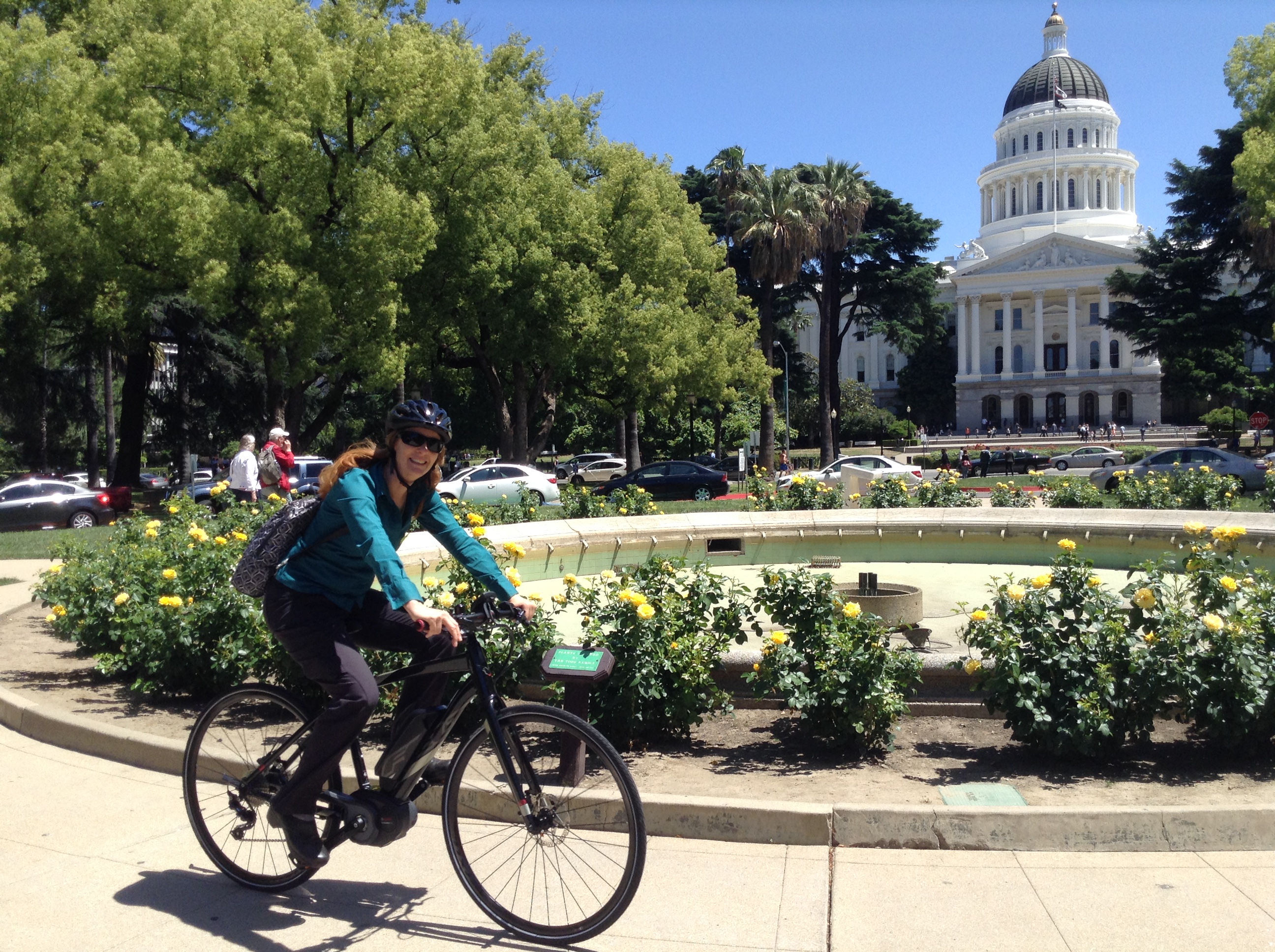On a recent road trip to visit family in the town of Springville, California, I spotted a new traffic circle on a two-lane stretch of Highway 190. The roundabout is at the intersection of Highway 190 and Road 284, in Tulare County near the eastern edge of the city of Porterville, where the flats of the Central Valley give way to the Sierra Foothills. Road 284 is called Reservation Road, for the nearby Tule River Indian Reservation.
From what I have read and experienced, roundabouts are really effective. Occasionally they are controversial, but they seem to be on the rise in California and probably elsewhere. I have experience locally with recently built roundabouts in Los Angeles and Lancaster. Though some drivers are unfamiliar with them, and therefore criticize them as confusing, that may not be a terrible thing. A little confusion can force drivers to slow down and pay closer attention.
Studies show that roundabouts make intersections safer; one Wisconsin study found a nine percent decline in crashes and a 52 percent drop in fatal and serious injury crashes. By effectively eliminating left turns, roundabouts greatly reduce points of conflict. By making all traffic merge to the right, collisions that do occur are less likely to be deadly T-bone crashes, and more likely to be side-swipe fender benders.
With no electrical parts, roundabouts are also cheaper than signals, both for installation and for maintenance.
They also keep traffic flowing, and make places safer for walking.
It is no wonder that roundabouts are popular. Nonetheless, due to my ignorance, I did not expect to encounter any in California's Central Valley, at a rural intersection with basically nothing in the way of foot traffic. I tended to think that roundabouts are more urban and suburban solutions.

My brother told me a bit about the formerly deadly intersection, and about the local resistance to the traffic circle. I did a little additional research and, overall, I am impressed at Caltrans leadership for having implemented this unexpected but hugely important safety improvement in this wholly appropriate location.

The intersection is located in unincorporated Tulare County, just east of the city of Porterville and the unincorporated community of East Porterville. CA 190 is a two-lane road. Before the roundabout was installed the intersection had been controlled by stop signs on Road 284; traffic on CA 190 did not stop.
About twelve miles east of the intersection, along Road 284, is the Eagle Mountain Casino. The roundabout intersection is where casino patrons (some of whom may be inebriated or otherwise impaired) make a left turn from a small road onto the bigger road to get to Porterville, the nearby good-sized city (population 55,000). Before the roundabout was installed, drivers turning from Road 284 onto CA 190 stopped, then turned left to enter uncontrolled highway traffic moving at high speeds.
According to Caltran's environmental studies for the roundabout, officially called "State Route 190 and Road 284 Intersection Improvement Project," the intersection was indeed deadly. From 2007 to 2010 there were eleven collisions reported: "six broadside-type collisions, two head-on, one hit object, one rear-end, and one overturn." Caltrans found that crashes, happening at a rate that was "higher than the statewide average for similarly designed intersections," were caused by "drivers either failing to slow down or not stopping at the . . . intersection."
Caltrans studied two alternatives: a roundabout, for an estimated $1.7 million, and a signalized intersection that would cost about $2.1 million. The roundabout was the preferred alternative due to "greatest project benefits in regard to safety." Caltrans District 6 Information Officer Christian Lukens reported that the actual roundabout ended up costing more than the initial estimate because aesthetic features were added, as was an extended truck apron in the central island to accommodate oversize loads.
Though the city of Porterville has successful roundabouts, including one that manages Walmart Distribution Center truck traffic at Jaye Street and Montgomery Avenue, and two more are planned for CA 190, locals criticized Caltrans plans for the roundabout. Someone placed a trailer at the site with a sign stating "190 Roundabout here? really? Tell Cal Trans no!" The Porterville Reporter critiqued the public process and questioned the facility's capacity to handle large trucks.
The Reporter warned that "motorists will be traveling along at 55 to 65 mph and have to slow to fifteen mph to negotiate the roundabout. Very dangerous." Note that the posted speed limit is 55 mph. It's sad that the press often supports some sort of imagined right for drivers to drive faster than the speed limit, which of course makes car collisions deadlier.
The Reporter did publish a well-worded response letter from former Porterville mayor Richard Stadtherr citing the planned roundabout's safety, cost savings, traffic flow, and air quality benefits.
Caltrans weathered the local criticism. They responded by adjusting the design somewhat in response to public input, especially working with the locals to ensure the facility would handle the occasional oversized truck. Caltrans persisted, and ultimately made a dangerous intersection much safer.
The new facility opened to the driving public on February 21, 2017.






